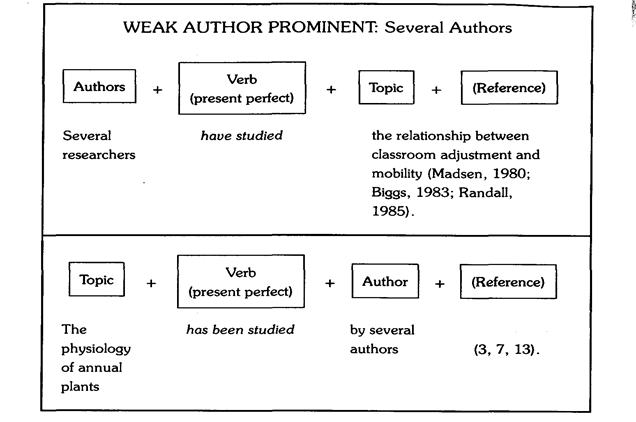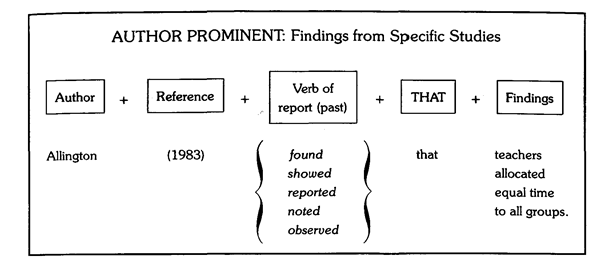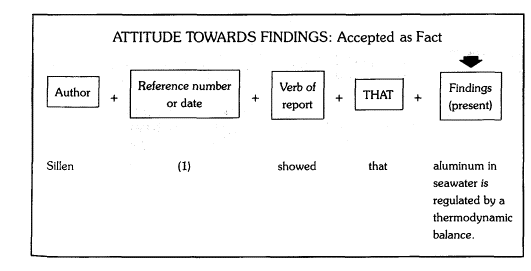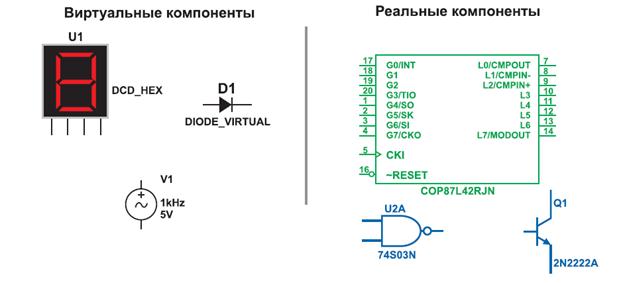Please, write down your answers to this task and mail them through course-email to your tutor with the mark "2.10.1"!
Tense in Information Prominent Citations When the focus of your citation is on the information, you should write the citation in the present tense. The present tense is used when the information you are citing is generally accepted as scientific fact.
Tense in Weak Author Prominent Citations
The present perfect tense is also used in general statements that describe the level of research activity in an area. These statements are often written without citations.
Tense in Author Prominent Citations
Attitude and Tense in Reported Findings
1. the findings of a particular study are generally accepted as fact; 2. the findings of a particular study are limited to that study, but are not to be accepted as true in all cases; 3. the author(s) of the study you are citing may themselves feel tentative about their findings; or they may not be reporting findings at all but only making suggestions or proposals. Depending on which attitude you take towards the findings of the researchers you cite, you may use the present tense, the past tense, or various modal auxiliaries. 1. When you believe the findings you are citing are fact, use the present tense in the complement verb (that is, the verb in the part of the sentence giving the findings).
3. Finally, if the findings you are citing were seen by the original authors as tentative, or were only suggestions or proposals rather than findings, use tentative verbs for the verb of report, and a modal auxiliary with the complement verb.
Notice that in all three of these cases, the verb of report is always in the past tense, while the verb tense in the "findings" part of the sentence varies according to the author's attitude. Signal Words and Verb Tenses in Stages III, IV, and V
|












